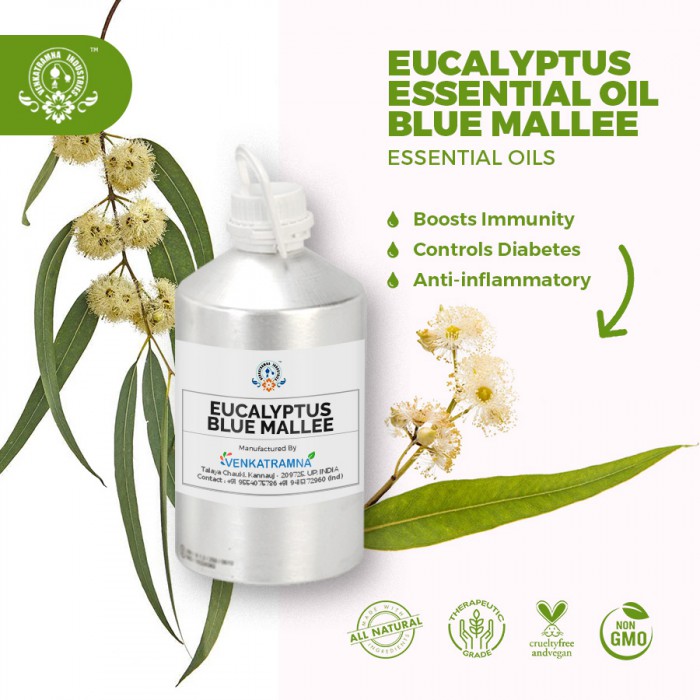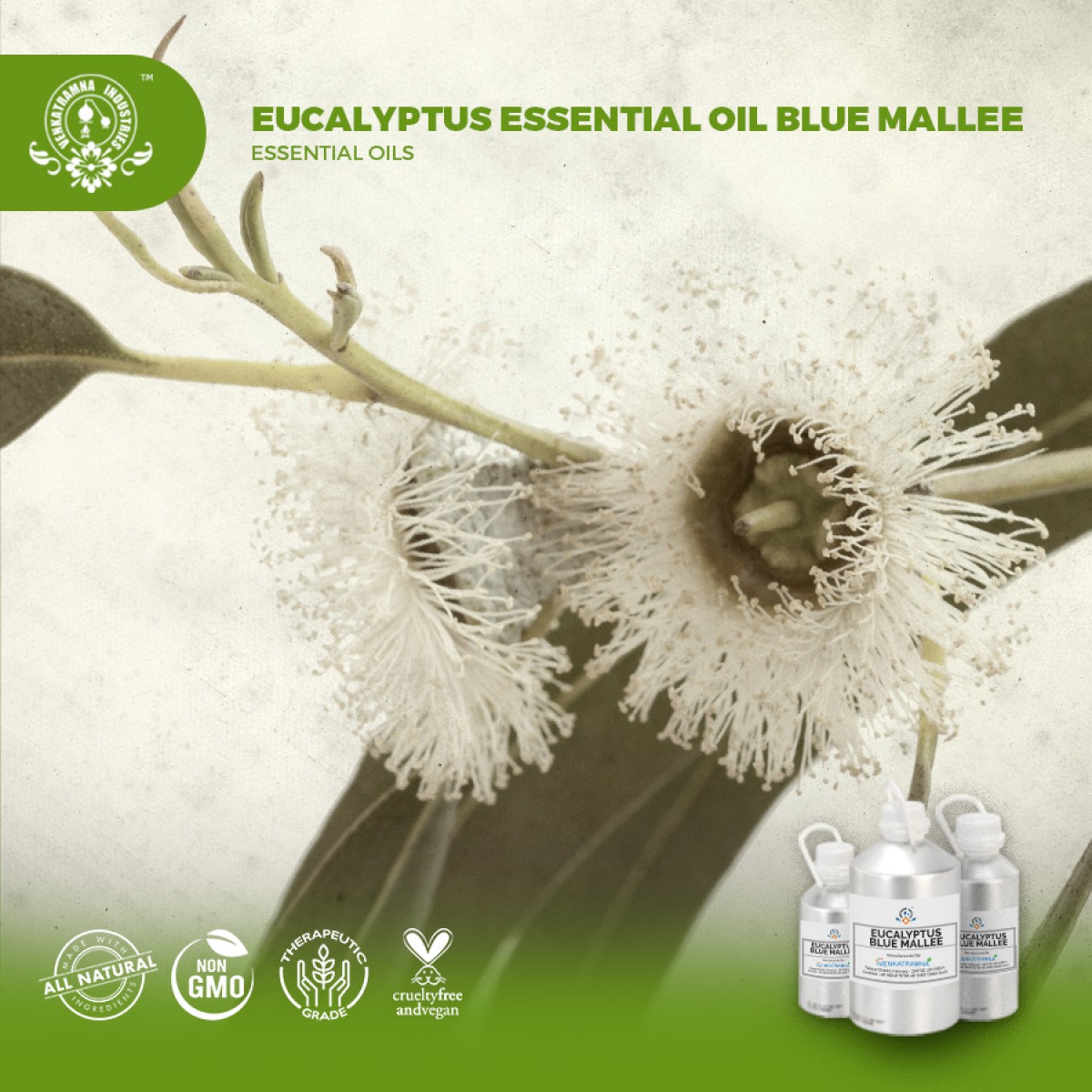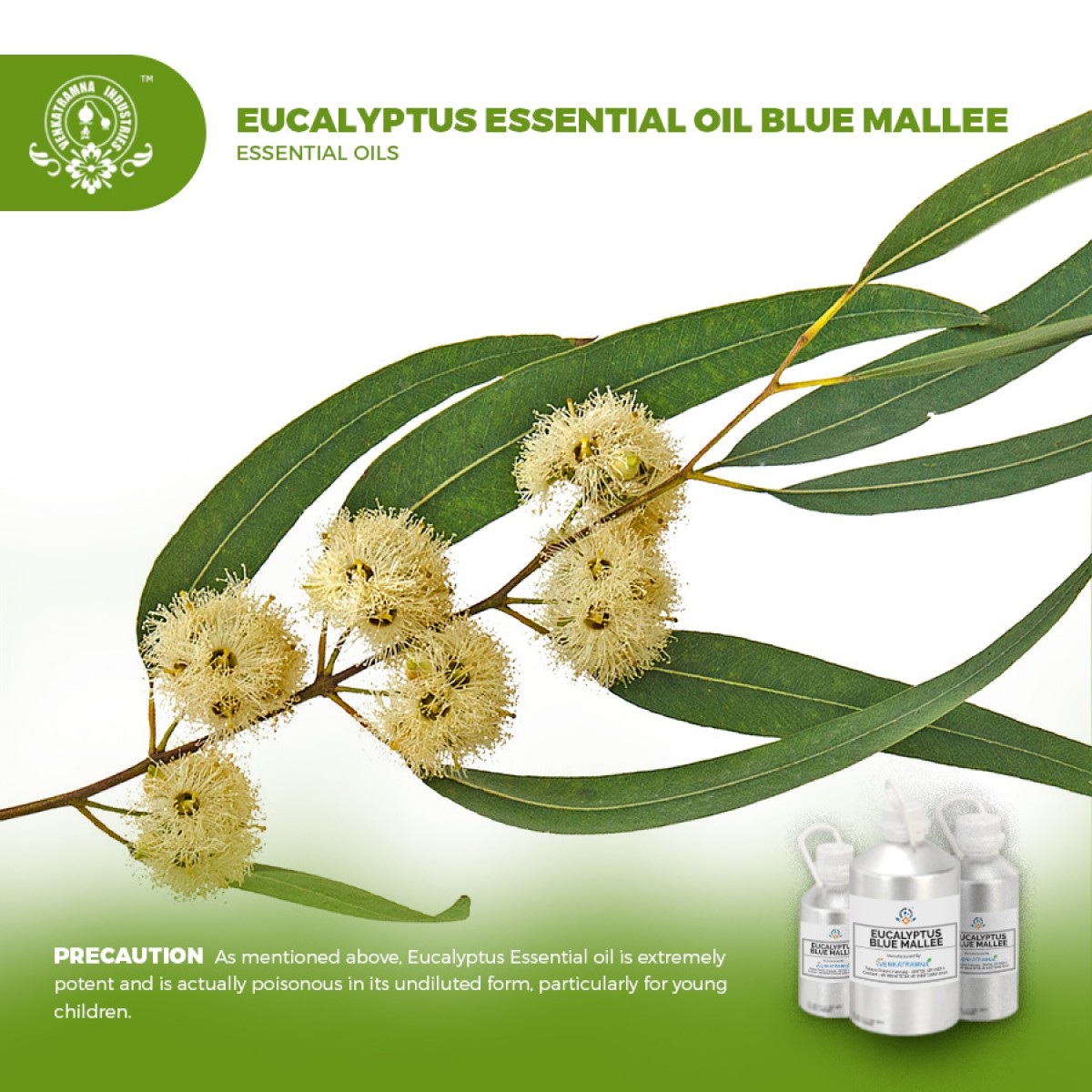Botanical Name: Eucalyptus polybractea Common name: Blue Gums, Southern blue gum, T Read More
|
Botanical Name: |
Eucalyptus polybractea |
|
Common name: |
Blue Gums, Southern
blue gum, Tasmanian blue gum, common eucalyptus, Blue Mallee |
|
Plant family: |
Myrtaceae |
|
Genus: |
Eucalyptus |
|
Appearance/Color: |
A thin, clear, colorless to pale yellow liquid. |
|
Odor: |
A top note with a strong aroma, Eucalyptus Blue Mallee has a
fresh, camphoraceous aroma with a faint peppermint undertone. |
|
Blends With: |
Basil, Cajeput, Cedarwood, Citronella, Lavender, Lemon,
Myrtle, Frankincense, Spearmint and Tea Tree. |
|
Origin: |
Australia |
|
Source: |
Wood and Leaves |
|
Method of
Extraction: |
Steam Distillation |
Eucalyptus,
(genus Eucalyptus), large genus of more than
660 species of shrubs and tall trees of the myrtle family
(Myrtaceae), native to Australia, Tasmania, and nearby islands. In
Australia the eucalypti are commonly known as gum trees or stringybark trees.
Many species are cultivated widely throughout the temperate regions
of the world as shade trees or in forestry plantations. Economically,
eucalyptus trees constitute one of the most valuable groups within the
order Myrtales.
The eucalypti grow rapidly, and many species attain great height. The giant gum tree, or mountain ash (Eucalyptus regnans), of Victoria and Tasmania, is one of the largest species and attains a height of about 90 metres (300 feet) and a circumference of 7.5 metres (24.5 feet). Many species continually shed the dead outermost layer of bark in flakes or ribbons, whereas certain other species have thick textured bark. The leaves are leathery and often hang obliquely or vertically; most species are evergreen. The flower petals cohere to form a cap when the flower expands. The capsule fruit is surrounded by a woody cup-shaped receptacle and contains numerous minute seeds. Possibly the largest fruits—from 5 to 6 cm (2 to 2.5 inches) in diameter—are borne by mottlecah, or silverleaf eucalyptus (E. macrocarpa).
DISCLAIMER
The complete range of conditions
or methods of use are beyond our control therefore we do not assume any
responsibility and expressly disclaim any liability for any use of this
product. Information contained herein is believed to be true and accurate however,
all statements or suggestions are made without warranty, expressed or implied,
regarding accuracy of the information, the hazards connected with the use of
the material or the results to be obtained from the use thereof. Compliance
with all applicable federal, state, and local laws and local regulations
remains the responsibility of the user.
The FDA has not evaluated the
statements on this website. No claims are made by Venkatramna Industries as to
the medicinal value of any products from vriaroma.com or by us. The information
presented here is for educating our customers about the traditional uses of
essential oils and is not intended to diagnose, treat, cure, or prevent any
disease. You are responsible for understanding the safe application of these products.
If you have any questions, please call or email us for further information.
As per NAHA guidelines, New Directions Aromatics
(NDA) does not recommend the ingestion of essential oils. It is imperative to
consult a medical practitioner before using Essential Oils for therapeutic
purposes. Pregnant and nursing women and those taking prescription drugs are
especially advised not to use this product without the medical advice of a
physician. The oil should always be stored in an area that is inaccessible to
children, especially those under the age of 7.
The leaf glands of many
species, especially black peppermint tree (E. salicifolia)
and Tasmanian bluegum (E. globulus), contain a volatile aromatic oil known
as eucalyptus oil. Its chief use is medical, and
it constitutes an active ingredient in expectorants and inhalants.
Tasmanian bluegum, northern gray ironbark (E. siderophloia), and other
species yield what is known as Botany Bay kino, an astringent dark
reddish resin, obtained in a semifluid state from incisions made in the
tree trunk.
Eucalyptus Oil in Pharma
As an ingredient, the
cineole-based oil is used as component
in pharmaceutical preparations to relieve the symptoms of influenza
and colds, in products like cough sweets, lozenges, ointments and inhalants.
Inhaled eucalyptus oil vapor may be a decongestant.
Essential oil obtained by steam
distillation and rectification from the fresh leaves or the fresh terminal
branchlets of various species of Eucalyptus rich in 1,8-cineole. The species
mainly used are Eucalyptus globulus Labill, Eucalyptus polybractea
and Eucalyptus smithii. Eucalyptus oil BP has cineole of over 70%
and is used as a component in pharmaceutical preparations of medicines such as
colds and coughs.
The cooling scent
of Eucalyptus Essential Oil is used in aromatherapy to relieve mental
exhaustion and rejuvenate the human spirit. It boosts circulation to the brain
and reduces harmful surface and airborne pathogens upon contact.
Essence of Eucalyptus Oil
As A Perfume Ingredient, adding
eucalyptus to a fragrance can be a very tricky endeavor because it is so potent
that it can easily dominate any scented formulation and deteriorate into ‘an
unwanted hint-of-mothball’ aspect.
Typically used as a minty, woody,
citrusy middle note in fragrances, eucalyptus is known for its fresh clean
aroma and is often found in soaps, detergents, mouthwashes and lotions as well
as perfume. It adds an airiness to any fragrance with its fresh, green, camphor-like
and lemony aspects.
COMMON USAGE
·
Improves respiratory health
·
Boosts immunity
·
Reduces anxiety and stress
·
Skin care
·
Controls diabetes
·
Anti-inflammatory activity
Ingredients:
|
S.No |
Key Constituents |
Strength (%) |
|
1 |
p-cymene |
28.13 |
|
2 |
1,8-cineole |
14.01 |
|
3 |
spathulenol |
15.03 |
|
4 |
Cryptone |
12.1 |
|
5 |
phellandral |
05.7 |
|
6 |
a-phellandrene |
13.6 |
|
7 |
Terpinen-4-ol |
2.5 |
|
8 |
Cuminaldehyde |
03.3 |
|
9 |
(P)-limonene |
11.1 |
|
10 |
Allo-aromadendrene |
5.0 |
|
11 |
a-pinene |
5.7 |
|
12 |
g-terpinene |
5.6 |
|
13 |
a-thujene |
3.2 |
|
14 |
Carvacrol |
01.1 |
TOXICOLOGICAL
INFORMATION
Safety Summary
·
Hazardous No Data
·
Contraindications Not Known
Eucalyptus Essential oil is
extremely potent and is poisonous in its undiluted form, particularly for young
children. Always consult a medical professional before adding it in any form to
your diet in a substantial way and monitor your body’s reactions. The powerful
effects of eucalyptus can be intense and are not recommended for everyone.
Stability and reactivity
Conditions to avoid: Extreme
temperatures
Incompatible materials: Highly
reactive chemicals which may produce unknown reaction products and so cause
additional hazards.
Hazardous decomposition products:
Not determined
ECOLOGICAL
INFORMATION
Avoid soil, surface water and
water-bearing stratum contamination.
Disposal considerations
Dispose in accordance with the
law and local regulations. Treat as trade effluent.





 MSDS-Eucalyptus.pdf
MSDS-Eucalyptus.pdf




